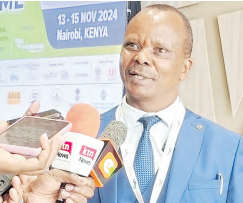

Kenya has rejected some proposals by renewable energy investors to tame over generation of power, which could lead to a spike in electricity costs.
Renewable Energy director Benson Mwaniki said that currently the expressions of interest, especially for solar, are beyond what the country can accommodate.
He noted that Kenya has made progress toward de-risking renewable projects, an effort led by the Geothermal Development Company (GDC), which has mapped key geothermal resources to attract private investors.
Similar maps exist for wind and solar, removing much of the exploration risk for potential investors. “Because of the requests, that’s why we are planning for them, so that they don’t come at the same time. So we have spread the interests up to around 2041 going to 2043,” said Mwaniki.
While he couldn’t provide specific figures on companies expressing interest in Kenya’s renewable projects, the renewable energy boss said the higher electricity production than the amount consumed will plunge the country into much more expensive power costs.
He pointed out that, in line with the short, medium, and long terms, the country is looking at projects that can be accommodated and at what year, based on the forecasting of the demand.
“If we do a surplus of a generation, then the tariff will go up. The cost of electricity will go up. So we have to balance between what we are taking in and what we are giving out. Yes, we have also talked about the issue of storage. Now, that one will also come in to ensure that we don’t waste the cheap energy like geothermal. We store it and use it during the peak hours,” added Mwaniki.
Kenya has made strides in clean energy, with the installed capacity of renewable energy sources as of June 2024 hitting 2,859.4 MW accounting for 80.04 percent of Kenya’s total installed capacity.
This consists of 2,427.1 MW of interconnected renewable energy capacity and 427.7 MW of captive renewable energy.
“Now, we have to ensure that our power mix will be adequate at every time. Like now, we are in 2024. We ensure that whatever we have for 2024 is enough for what we have for 2024,” he added.
“We look at the forecasting; we
talked about forecasting for 2025
and 2026, so what are the potential
candidates to fit in to ensure that we
have adequate power in that year?”
So that’s why we cannot accept one
source that is beyond what we can
accommodate.”













